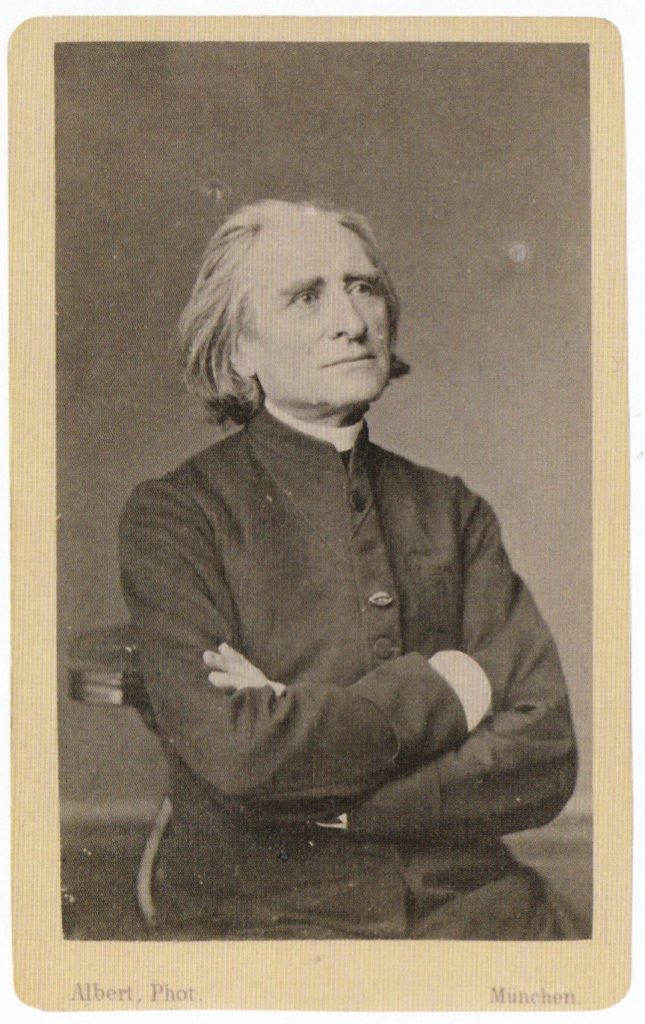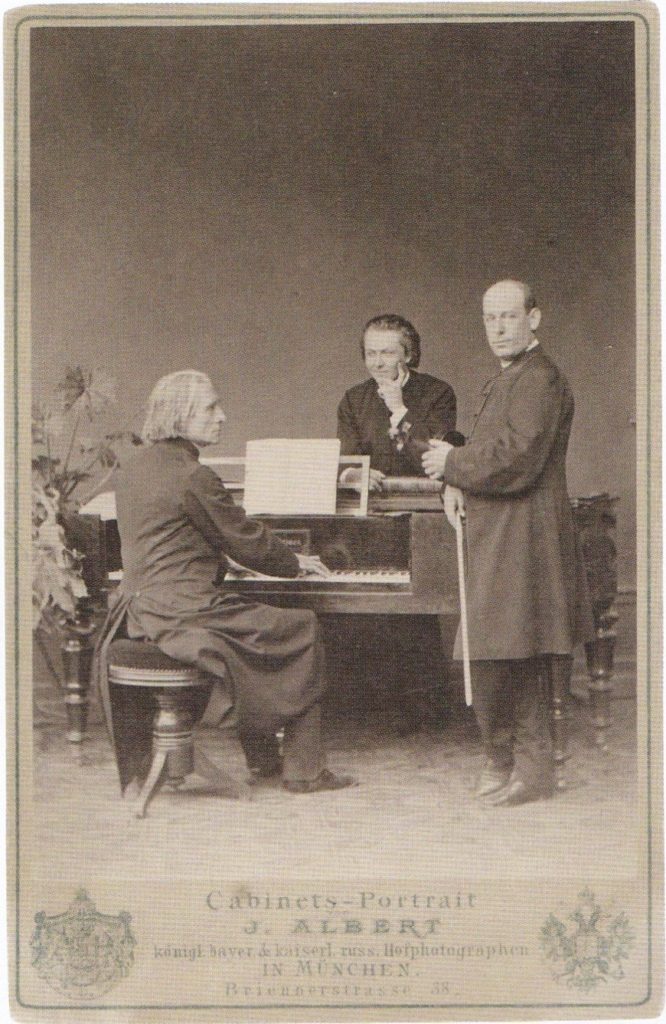Published on Franz Liszt Group, on December 11, 2021. If you want to know how the Story Behind series started, I give details in “Story Behind” Series #1″.

This picture is part of a series of photographs taken in Munich in September or October 1867 by Joseph Albert. Among them, the famous picture of Liszt sitting at the piano with Ede Reményi and Nándor Plotényi.

As for the picture I chose, I like it because it is the only one of the series in which we see Liszt smile. I like his pose too. Maybe he was told that he always looked serious, and it would be nice to have at least one picture of him smiling.
More about the photographer. Born in Munich in 1825, Joseph Albert was an accomplished chemist and applied his skills to photographic inventions. At the age of 25, he opened his photography studio, located at Brienner Strasse 8B, using glass plates to develop the first photomechanical printing technique. He became court photographer (Hoffotographer) of the Bavarian royal family in 1857. He photographed Maximilian II and his young son, who ascended to the throne after his father’s death as Ludwig II. He became famous for his photographs of the royal events as well as Bavarian castles and buildings of great historical and cultural significance. In 1868, he introduced the Albertype, which allowed photographs to be successfully reproduced and printed onto paper, linen, and silk. The Albertype revolutionized the photo printing industry by allowing a flatbed press to produce up to 1,000 copies at a time. His photographs of composer Richard Wagner, taken over a period of nearly 20 years, are among his most celebrated works. In 1882, he opened his gallery in Karlstrasse, where the portraits of some of Germany’s most distinguished dignitaries where exhibited. He died in May 1886, a few months before Liszt.
Now, back to Liszt, and what happened in his life during the year 1867. In March, Liszt transferred to his uncle, Dr. Eduard Liszt, his title of nobility(von). The title was necessary to marry the Princess Carolyne zu Sayn-Wittgenstein without her losing her privileges, but he didn’t want to keep it after the marriage fell through. Eduard’s son and Franz Liszt’s cousin, also called Franz, became Franz von Liszt. He worked on his coronation mass in Santa Francesca Romana until April 14th. The original version, performed for the coronation of Emperor Franz Joseph and Empress Sisi (Elisabeth) as King and Queen of Hungary in the Matthias Church in Pest on June 8, 1867, was a short mass with only six movements, and a duration of approximately half an hour. After the first performance he added the Offertory, and two years later the Gradual. The violin solo in the Benedictus was originally composed for Ede Reményi, but he couldn’t come to Pest (the solo was played by Joseph Hellmesberger instead). However, as shown in one of the pictures from the Albert series, they could reunite briefly in Munich. Liszt stood in Pest from June 4 to 16, then went back to Rome. Traveling back to Germany at the end of July, he stopped in Weimar, Eisenach and Munich where the picture was taken. He stood in Munich from September 20 to October 28. His then goes to Tribschen in Switzerland to talk to Wagner about his liaison with Cosima. Back in Rome on November 2nd, he made a piano transcription of Isolde’s Liebestod from Wagner’s Tristan.
